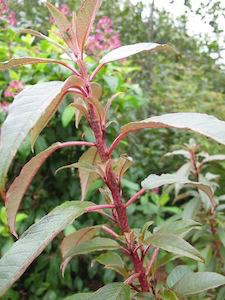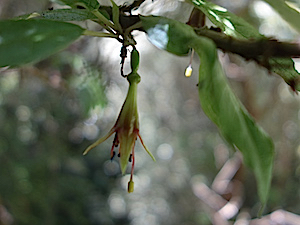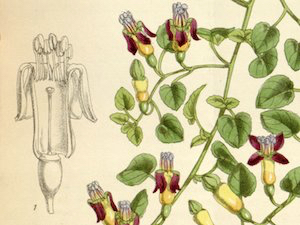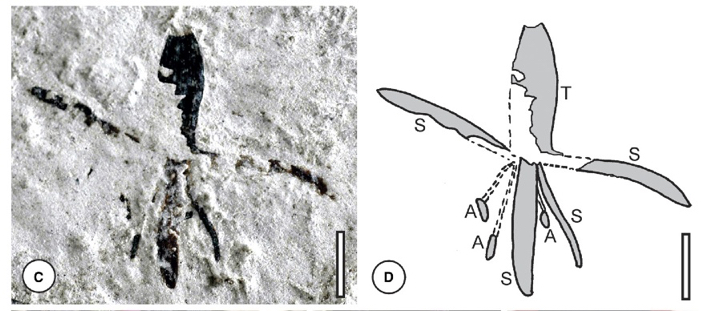For the new year, an old fuchsia. Fuchsia antiqua sp. nov.
Sunday, January 12, 2014

Fuchsia antiqua was last seen sometime in the earliest Miocene Epoch. That's about twenty-three million years ago. It was recently found in Early Miocene limestone taken from a mining pit in southern New Zealand. It's an exceptional discovery. Onagraceae fossils, the Evening Primrose Family to which the Fuchsia genus belongs, are exceedingly rare in general. Not just Fuchsia fossils. Besides a few scatterings of fossil pollen grains from undeterminable fuchsias once growing in South America, Australia and New Zealand (described as Diporites apsis, but now Koninidites apsis), this is the earliest—and only—actual Fuchsia to have ever shown up in the fossil record. At the same time, there was also a separate fossilized

Fuchsia antiqua was recently published in the October 2013 issue of the ➤ American Journal of Botany. For a number of reasons, including the detailed microscopic analysis of the pollen grains preserved in the anther clump, the fossils were determined to be a distinct new species by the authors. The new epithet, meaning Old or Ancient Fuchsia, is in reference to it's being the oldest Fuchsia macro-fossil ever discovered.
The diminutive flower is barely two centimeters long. With affinities to the four existing plants in the ➤ Skinnera and ➤ Procumbentes sections native to the South Pacific, it appears closely related to both Fuchsia excorticata, still found today in New Zealand,

The flower and anther mass were apparently from a tree or shrub that had been growing on the banks of an ancient lake formed inside a small volcanic crater known as a maar. Not unlike modern F. excorticata, actually, which is often found in similar lake-side or stream-side habitats in New Zealand today. Along with a significant number of other plant fossils, they had fallen into the shallow lake and were preserved in fine sediment on the bottom. At first glance the fossil flower might strike a casual fuchsia observer as looking a lot like F. magellanica. But it’s only nineteen millimeters long and the peculiar structure of the anthers in the associated mass show that it’s much more closely related to Skinnera/Procumbentes than Quelusia. The illustration above is of Fuchsia excorticata, for comparison with the fossil flower.
The discovery may not rival the Wollemi pine, if you want to grow living fossil plants, but it is exceptionally significant and will help shed much light on the evolution of New Zealand’s unique flora, at the least. And on a topic that’s very dear to my own heart... The history and evolution of fuchsias. What’s not to love about this amazing piece of limestone and its unique fossil? Nothing! Sorry. I did warn you that I couldn’t contain my excitement. More fuchsia fossils please. More!
See: Daphne E. Lee, John G. Conran, Jennifer M. Bannister, Uwe Kaulfuss, and Dallas C. Mildenhall. "A fossil Fuchsia (Onagraceae) flower and an anther mass with in situ pollen from the early Miocene of New Zealand", American Journal of Botany 100(10), October 2013, pp. 2052-2065.
(Illustrations: 1 & 2. Fuchsia excorticata; 3. F. procumbens. J.T. Moggridge, Curtis’s Botanical Magazine, vol. 100 [ser. 3, vol. 30]: t. 6139 (1874); 4. F antiqua. Lee, et al. 2013.)
